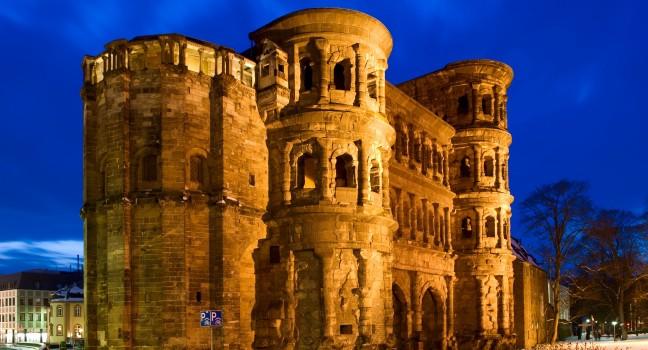Porta Nigra

The best-preserved Roman structure in Trier was originally a city gate built in the 2nd century (look for holes left by the iron clamps that held the structure together). The gate served as part of Trier's defenses, and was proof of the sophistication of Roman military might and its ruthlessness. Attackers were often lured into the two innocent-looking arches of the Porta Nigra, only to find themselves enclosed in a courtyard. In the 11th century the upper stories were converted into two churches which remained in use until the 18th century. The tourist office is next door.



